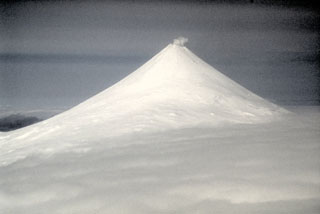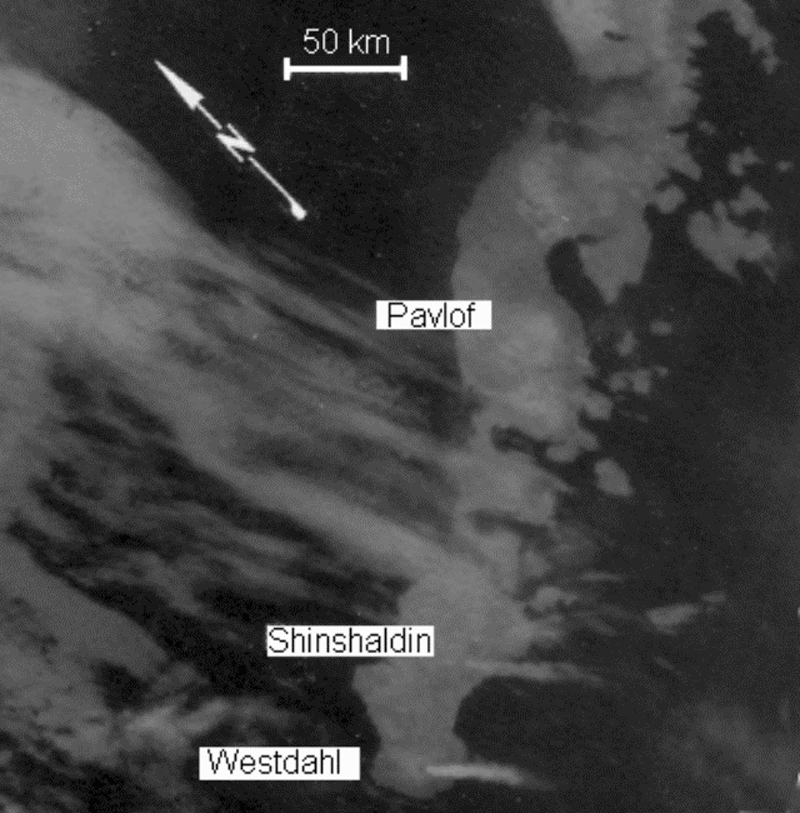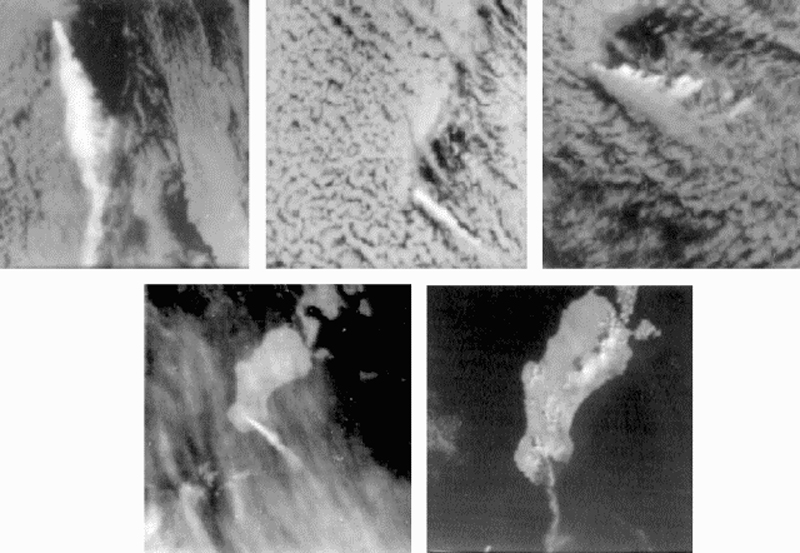Report on Shishaldin (United States) — February 1978
Scientific Event Alert Network Bulletin, vol. 3, no. 2 (February 1978)
Managing Editor: David Squires.
Shishaldin (United States) Large steam plume, accompanying nearby Westdahl eruption
Please cite this report as:
Global Volcanism Program, 1978. Report on Shishaldin (United States) (Squires, D., ed.). Scientific Event Alert Network Bulletin, 3:2. Smithsonian Institution. https://doi.org/10.5479/si.GVP.SEAN197802-311360
Shishaldin
United States
54.756°N, 163.97°W; summit elev. 2857 m
All times are local (unless otherwise noted)
A NOAA satellite image (figure 1) on 8 February at 1835 shows simultaneous 60-km plumes emerging from the summits of Shishaldin and Westdahl, about 50 km apart. No plume from Shishaldin is visible in images taken 8 hours earlier and 16 hours later (figure 2). No ashfall at Shishaldin can be seen in the latter image, but resolution is only 0.9 km and a light or moderate ashfall would probably not be visible.
Geological Summary. The symmetrical glacier-covered Shishaldin in the Aleutian Islands is the westernmost of three large stratovolcanoes in the eastern half of Unimak Island. The Aleuts named the volcano Sisquk, meaning "mountain which points the way when I am lost." Constructed atop an older glacially dissected edifice, it is largely basaltic in composition. Remnants of an older edifice are exposed on the W and NE sides at 1,500-1,800 m elevation. There are over two dozen pyroclastic cones on its NW flank, which is covered by massive aa lava flows. Frequent explosive activity, primarily consisting of Strombolian ash eruptions from the small summit crater, but sometimes producing lava flows, has been recorded since the 18th century. A steam plume often rises from the summit crater.
Information Contacts: J. Kienle, Univ. of Alaska.



